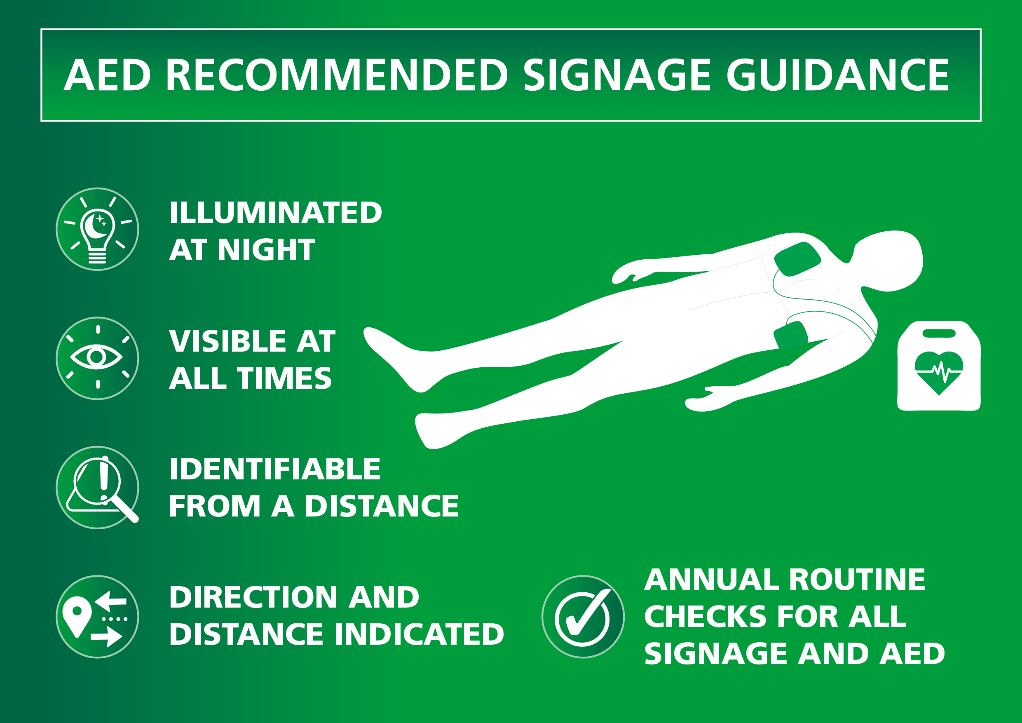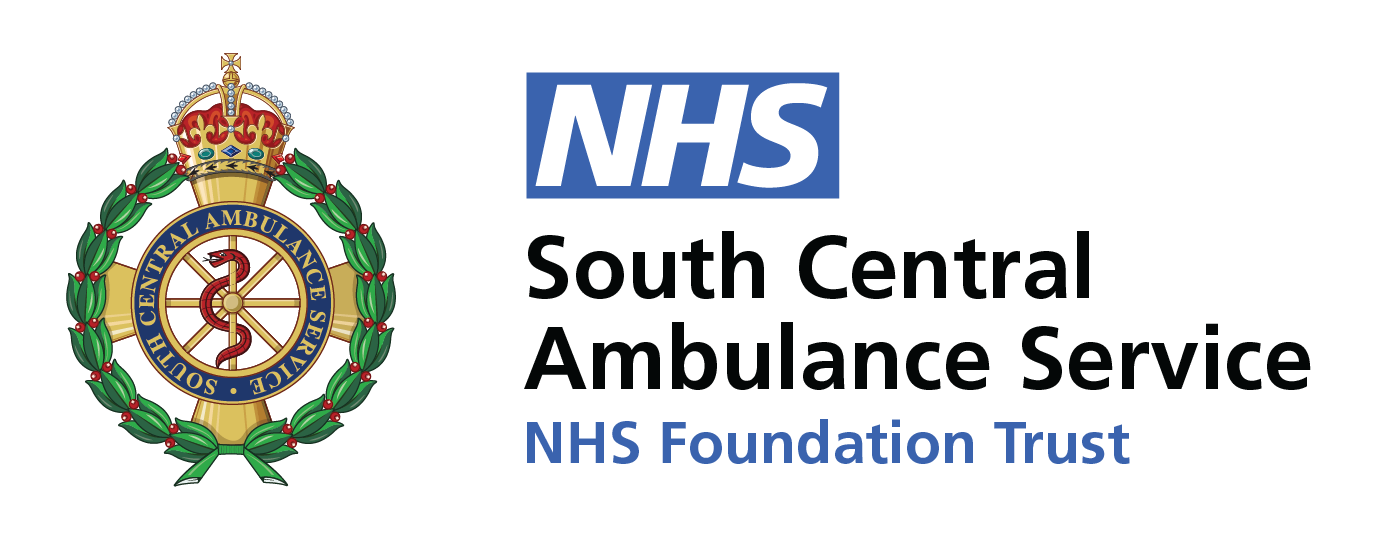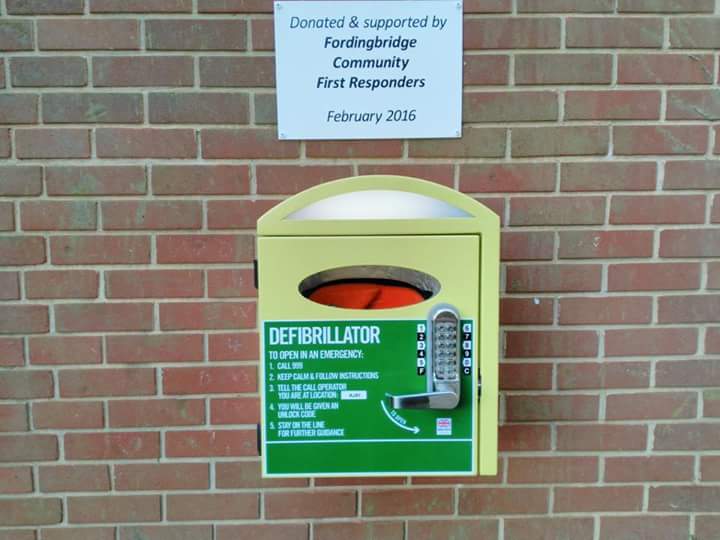A leading resuscitation expert has warned the public are left playing a “deadly game of hide and seek” when it comes to locating automated external defibrillators (AEDs) which can help save the lives of people who have suffered a cardiac arrest.
Professor Charles Deakin, Divisional Medical Director and Resuscitation Lead at South Central Ambulance Service NHS Foundation Trust (SCAS), said two-thirds of the devices in the UK have no signage at their locations and few have any guidance directing people to them.
His work in this area and the publication of these findings has now led to the development of new international guidelines which set out a standard protocol for adequate signage and illumination to improve public access.
“Early defibrillation is a critical link in the chain of survival for those who suffer a cardiac arrest outside of hospital and ensuring rapid location of public access AEDs decreases the time it takes to deliver the first shock and ultimately improves survival,” explained Prof Deakin, a Professor of Resuscitation and Pre-Hospital Emergency Medicine, ahead of international CPR and AED awareness initiative World Restart a Heart Day which takes place on 16 October.

“However, when we assessed the quality of public AED signage in Hampshire, we found this to be extremely poor, limiting the effectiveness of the devices and leaving the public playing a deadly game of hide and seek, wasting valuable seconds in bringing life-saving treatment to the patient.
“This is reflective of the picture not just in the rest of the UK, but also many other countries including the US and is one of the reasons that survival from out-of-hospital cardiac arrest remains so poor.”
Cardiac arrest occurs when the heart stops pumping blood around the body. Cardiopulmonary Resuscitation (CPR) and defibrillators – devices which deliver an electric current to shock the heart muscle – enable anyone to provide immediate assistance to people prior to the arrival of emergency services.
Emergency services attempt or continue resuscitation in around 30,000 out-of-hospital cardiac arrests (OHCA) in the UK every year – but just one in 10 people survive to hospital discharge.
A person’s chances of survival decrease by up to 10 per cent for every minute without CPR or access to a defibrillator, so rapid action from members of the public is vital.
In Prof Deakin and his colleagues’ research into public access defibrillation, initially published in 2018 in the journal Resuscitation, the authors outlined a series of recommendations to improve signage and these now form the basis of new international 2022 resuscitation guidelines.
The standard is now that signs should be visible where the AED is stored and within it’s presumed operational radius with a minimum of 200 metres and they should indicate the direction and distance to the AED. It is also recommended that the lettering should be a sufficient size to be identifiable from a distance of at least 50 metres (12 cm in height). Signage artwork resource and guidance can be found at the end of this article.
In addition, the AED cabinet should, whenever possible, be illuminated at night, with associated signage made of photoluminescent material and signage should be properly maintained, with all signs associated with the AED inspected at the same time the device undergoes its annual routine checks.
The guidelines, published in the journal Circulation, also include a series of other potential interventions to improve public access including education programmes, 24/7 access to AEDs, equipping police, firefighters and volunteers with the devices, increasing personal and home access to defibrillators and using smartphones apps to alert bystanders to a nearby cardiac arrest.
As part of activities organised by SCAS this week to mark World Restart a Heart Day, Stowe School, Buckinghamshire will become the first in the world to install the new signage based on these recommendations.
School Head, Dr Anthony Wallersteiner, said: “Stowe School is delighted to have been selected to showcase the new international 2022 signage for Automated External Defibrillators (AEDs). Stowe is a school which attracts a significant number of external visitors through its partnerships with the National Trust and Stowe House Preservation Trust. This instantly recognisable signage will make a dramatic difference in saving precious seconds in treating cardiac arrests which require immediate, life-saving intervention.”
A nationwide database of defibrillators is available via the British Heart Foundation’s defib finder website at www.defibfinder.uk – powered by national defibrillator network The Circuit.
“While publicly available AEDs have saved countless lives, they remain underused so that many individuals who may potentially survive, die because a defibrillator was not available to them,” said Prof Deakin.“So we must continue to break down the barriers to AED use while simultaneously continuing to raise awareness of the importance of CPR and how to use it.”
“Now that people can locate their nearest AED via defibfinder.uk I am very positive about the impact the new international guidelines will have on improving access to defibrillators everywhere. I am delighted that Stowe School is taking the lead on installing this vitally important signage and hope that many more will follow.”
Contact communications@scas.nhs.uk for more information.

